Introduction
While all of those features sound promising, it is the inclusion of a new 20.2 Mpix Dual Pixel CMOS AF sensor that makes the $1,199 EOS 70D particularly attractive to video users. This new sensor adopts two photodiodes per pixel location, which are used separately for phase-detection AF in Live View mode and during video-capture, although the firm say only 80-percent of the frame is used. For stills capture, the output from the two photodiodes is combined, giving a pixel count of 20.2 million. At the time of the announcement, Dual Pixel CMOS AF is compatible with 103 current EF lenses, spanning both EF and EF-S models but it also has limited compatibility with many more, mainly older lenses.
Although we’ve not tested AF compatibility (or reliability), the labs have worked incessantly to analyze the optical performance of over 130 models from both Canon and third-party makers, ranging from the uniquely wide, yet reasonably compact APS-C Sigma 8-16mm f/4.5-5.6 DC HSM through to the affordable 18-55mm ‘starter’ zooms and up to the new and not so accessibly priced full-frame EF 600mm f/4 IS II USM and EF 200-400mm f/4 IS USM Extender 1.4x models.
Some of the more recent introductions analyzed by DXO Labs include:
– Canon EF 200-400mm f/4L IS USM Extender 1.4x (extender on and off)
– Sigma 18-35mm F1.8 DC HSM A Canon
– Canon EF-S 18-55mm f/3.5-5.6 IS STM
– Sigma 30mm F1.4 DC HSM A Canon
– Canon EF 35mm f/2 IS USM
Ahead of our comprehensive lens recommendations for the Canon EOS 70D, we thought we would take a look at the optical quality of Canon’s new STM lenses, which with their smooth practically silent focus movements seem well suited to the video oriented features of the camera. Read onto find out how well each of the three lenses in the range perform.
Technology Overview
With the introduction of the EOS 650D / Rebel T4i in June 2012, Canon announced two lenses bearing the new ‘STM’ moniker, the full-frame EF 40mm f/2.8 STM and EF-S 18-135mm f/3.5-5.6 IS STM. The STM designation refers to a stepper-motor mechanism, which is sometimes referred to as a pulse motor. These models are designed to complement the existing range but eschew the firm’s ultrasonic AF motors, which were designed to refocus quickly with large movements then make smaller focus corrections. This tends to result in irregular, hesitant focus movements that’s of little consequence with stills but is a somewhat unsettling experience during video-capture.
In conjunction with guide bars, the stepping motor moves the focus lens using a lead screw and rack which results in very smooth, precisely controlled movements (in the order of microns) and is especially beneficial during AF tracking during video capture. With no gears (found on the firm’s Micro USM motors, for example), low operating noise is another advantage.
Canon aren’t the first to adopt this type of AF technology; it’s used widely in mirrorless camera systems but with the adoption of Hybrid AF systems on the EOS 650D and latterly the EOS 700D, EOS M and EOS 100D, and now the dual pixel AF CMOS found on the EOS 70D, the STM lenses should be well-matched.
Canon EF 40mm f/2.8 STM lens performance:
Although a full-frame model this so-called ‘pancake’ lens is the first and only prime bearing the STM designation to date. With its 6 element, four group design including one aspherical element for reducing aberrations it’s an unusually complex for an ultra-compact model measuring just 22mm in length and weighing 130g. As a 60mm equivalent on the EOS-70D it is somewhere between a ‘normal’ and short-telephoto lens, however its portability and imaging characteristics, not to mention the accessible price (around $249) make it an attractive option.
With a DxOMark lens score of 19 points, the 40mm f/2.8 is the highest performing of the three STM lenses announced thus far. Sharpness is good though on the EOS 70D it isn’t as consistent across the frame as it is been noted on full-frame cameras though centrally sharpness remains high. Distortion is very low and vignetting mainly at full aperture is also low, but chromatic aberration isn’t particularly well controlled.
Canon EF-S 18-55mm f/3.5-5.6 IS STM lens performance:
As a ‘kit’ lens the 18-55mm is less compelling than the 18-135mm f/3.5-5.6, which was launched alongside the 40mm f/2.8 but as around $149 when bought with the camera (saving $100 if bought separately), it may be a useful addition. This model has image stabilisation and takes 58mm filters like its DC motor driven sibling,but it has more complex optical construction of 13 elements in 11 groups and an inner focus mechanism that avoids unwelcome extension or the rotation of the front element, perfect for polarisers or square filters.
In terms of optical quality this lens is very close to the overall performance (and ranking) of the DC motor version but there are some improvements thanks to the more complex optical formula. Sharpness,however, isn’t one of the highlights. Resolution is at its highest at the wider end of the range of focal lengths but it has disappointing uniformity through the range. Not only that, but distortion (particularly at 18mm) and chromatic aberration are higher than we would like to see.
Canon EF-S 18-135mmm F3.5-5.6 IS STM lens performance:
This lens was announced with the 40mm f/2.8 and, by virtue of the wide range of focal lengths, is the most versatile of the three. As with the 18-55mm, it’s purpose designed for the APS-C format while quite a large and heavy lens by comparison (it weighs 480g and measures 76.6x96mm un-extended) it is the equivalent to a 29-216mm.
As well as featuring image stabilisation this lens unusually has one UD glass element (for reducing chromatic aberration, but also sports one aspherical lens in its 16 element / 12 group construction. This lens is also available with the Canon EOS 7D as part of a kit, saving about $200 on the regular price of $549.
With an overall DxOMark lens score of 13 points this lens is a similar performer to the 18-55mm, which is good considering the wider range and extra flexibility that brings. As with the 18-55mm sharpness is on the low side, just 9P-Mpix out of potential 20P-Mpix on the EOS 70D, and suffers from the same poor uniformity across the imagingfield. At 18mm, distortion is quite strong and chromatic aberration is noticeable if you look for it (though it is lower than the other STM kit option). Overall, this is the lens to go for between the two.
If you have a Canon EOS 70D and a favorite lens, we would very much like to hear from you. Please leave a comment below, stating what lens it is and why you like it.
Best primes:
 |
 |
 |
 |
| Sigma 85mm F1.4 EX DG HSM Canon | 969 | 25 | 13 |
| Sigma 35mm F1.4 DG HSM A Canon | 899 | 25 | 15 |
| Canon EF 35mm f/2 IS USM | 850 | 25 | 14 |
| Canon EF 85mm F1.2L USM | 1599 | 24 | 14 |
| Canon EF 85mm f/1.2L II USM | 1869 | 23 | 12 |
| Canon EF 35mm f/1.4L USM | 1420 | 23 | 13 |
| Canon EF 100mm f/2 USM | 440 | 23 | 11 |
| Canon EF 50mm f/1.4 USM | 385 | 22 | 12 |
| Sigma 50mm F1.4 EX DG HSM Canon | 499 | 22 | 11 |
| Samyang 85mm f/1.4 Aspherique IF Canon | 285 | 22 | 11 |
With equal ranking,the best performing primes include the Sigma 85mm f/1.4 EX DG HSM and the newer Art series 35mm f/1.4 DG HSM as well as the new Canon EF 35mm f/2 IS USM. While it may be somewhat embarrassing that two out the three of the best optical performers for the Canon EOS 70D are made by Sigma,
Canon are well represented in the ‘Top 10’. Note though, it is dependent on focal length; you won’t see any ultra-wide angle lenses or extreme telephotos in this list as it’s lot easier to design and manufacture a lens with fewer aberrations in the 35-85mm range.
#1: Sigma 35mm f/1.4DG HSM A
When taking the highest DxOMark score and the highest sharpness scores into account, the $899 Sigma 35mm f/1.4DG HSM A once again takes the top slot as the highest performinglens in our database when mounted on the Canon EOS 70D. Although a big and heavy lens (it weighs 665g / 23.05oz), as the equivalent to a 56mm on the EOS 70D it’s still an attractive option, and especially useful if you already have access to a full-frame Canon body. While a 15P-Mpix score for sharpness puts the Sigma ahead of the rest, distortion, vignetting and chromatic aberration are all low, vignetting especially, due to smaller sensor of the EOS 70D body.
#2 Canon 35mm f/2 IS USM
If it wasn’t for the price being so close to the Sigma 35mm f/1.4, the $849 Canon EF 35mm f/2.0 IS would be an easy choice to make for the Canon EOS 70D. Although quite large physically, it’s not particularly heavy at 335g and makes a good match in terms of balance and handling. While a stop ‘slower’ at maximum compared to the Sigma model it has a 4-stop stabiliser and very good sharpness centrally at full-aperture, though closing down to f/4 improves sharpness in the outer field. There’s some vignetting noticeable at full aperture but transmission, distortion and chromatic aberration are all excellent.
#3 Sigma 85mm f1/4 EX DG HSM
While the optics and mechanics have yet to be upgraded in line with the firm’s new Art series lenses, the current Sigma 85mm f/1.4 EX DG HSM model is an excellent performer optically. This full-frame model, equivalent to a 135mm on the EOS 70D, is a sharp lens but this particular imaging characteristic isn’t everything, especially in a portrait lens.
Indeed, at maximum aperture, acutance is a bit low and it’s not really sharp until stopped down to f/2. Edge to edge sharpness begins two stops down from full aperture, which gives the photographer some control at least. Vignetting and chromatic aberration are both very low in a ‘high-speed’ lens like this, and there’s no measurable distortion. Transmission at 1.7TStop is a little disappointing but it’s not unexpected. At $969 it is not inexpensive, but it’s still some $900 less than the Canon EF 85mm f1.2L.
Best Zoom
 |
 |
 |
 |
| Sigma 18-35mm F1.8 DC HSM A Canon | 799 | 27 | 15 |
| Canon EF 24-70mm f/2.8L II USM | 2299 | 21 | 14 |
| Sigma 50-150mm f/2.8 EX DC APO OS HSM Canon | 999 | 20 | 15 |
| Tamron SP 24-70mm F2.8 Di VC USD Canon | 1299 | 20 | 11 |
| Tamron SP 70-200mm F/2.8 Di VC USD Canon | 1699 | 20 | 15 |
| Canon EF 70-200mm f/2.8L IS II USM | 2499 | 18 | 14 |
| Sigma 17-50mm F2.8 EX DC OS HSM Canon | 669 | 17 | 10 |
| Canon EF-S 17-55mm f/2.8 IS USM | 1046 | 16 | 11 |
| Sigma 70-200mm F2.8 EX DG APO HSM Canon | 880 | 16 | 10 |
| Tokina AT-X 11-16 PRO DX Canon | 659 | 16 | 11 |
There’s no denying that zooms are more flexible than primes but they’re usually heavier and bulkier to work with. Combine that with a slower maximum aperture and it’s no wonder that primes are making a comeback. That said, if video is important then a zoom makes a lot of sense. Sigma recently bucked the trend for ‘slow’ zooms by introducing the world’s fastest standard zoom for APS-C DSLRs in the form of the $799 18-35mm f/1.8 DC HSM A. Although not small or light in weight the 29-56mm equivalent also happens to be one of the best performing models on the Canon EOS 70D. It out performs both the full-frame Canon and Tamron 24-70mm f/2.8 models and matches the Sigma 50-150mm f/2.8 EX DC APO OS HSM and new Tamron SP 70-200mm f/2.8 for sharpness.
#1: Sigma 18-35mm f/1.8 DC HSM A
With a DxOMark lens score of 27 points, the Sigma 18-35mm f/1.8 is the best performing zoom lens in our database, and with a score of 15P-Mpix the lens compares with many high-end primes. Sharpness is higher and more uniform across the field at 18mm, but even when zoomed to 35mm the center of the field is excellent at full aperture, while edge-to-edge sharpness is achieved by f/2.8. If there’s a shortcoming to the design it’s that vignetting is a little high at -1.1 EV, but chromatic aberration is very well controlled and distortion is quite mild. Transmission, an important consideration for video makers, is excellent at 1.8Tstop. The range of focal lengths isn’t particular wide, as the equivalent to a 29-56mm, but at $799 it’s excellent value.
#2: Canon EF 24-70mm f/2.8L II USM
Our previous best performing standard zoom offers a wider range but as it’s a full frame lens it’s the equivalent to a not quite as appealing 38-112mm on the Canon EOS 70D. It has excellent sharpness and uniformity at just about every focal length and aperture setting it has very good transmission, low distortion and well controlled vignetting. Chromatic aberration is a little high when compared to the Sigma, but it’s still low in general. If you have a full-frame camera then this lens would serve double duty, but at $2,299 it’s not inexpensive when compared with the new Sigma.
#3: Sigma 50-150mm f/2.8 EX DC APO OS HSM
The next best performing zoom on the EOS 70D is yet another Sigma model. As the equivalent to a 70-200mm, this lens doesn’t have a direct ‘high-speed’ counterpart in Canon’s range and may explain why this model consistently performs well in tests. It has excellent sharpness and uniformity when stopped to f4 at all focal lengths but at full aperture the performance is a little sketchy at 150mm. In all other respects it is a first class lens with negligible distortion from 70mm onwards (it shows some barrelling at 50mm), low vignetting and equally low lateral chromatic aberration, which are all unusual in a ‘high-speed’ telephoto-zoom like this. At $999, it’s good value when compared with full-frame models but bear in mind it is designed for APS-C bodies only.
A decade of improvement in Canon image quality:
In our recent review of the Canon EOS 70D, the new 20.2-MPix ‘Dual Pixel CMOS AF’ sensor achieved a DxOMark Sensor score of 68 points.
It’s a pretty good score, but as a benchmarking exercise, we noted at the time it was really only a slight increase in performance over the earlier Canon EOS 60D. And, neither did it perform that closely when compared with the rival Nikon D7100 or with the Sony SLT Alpha 77.
DxOMark sensor score and the individual use case sensor scores don’t tell the whole story, and only reflect part of the sensor’s capabilities. (see our DxOMark sensor score documentation)
By analysing the data from the camera/sensor and lens together, as we do in our DxOMark lens scores, we can take the both the acutance of the combination into account.
If we take that a step further, assessing the same lens on different camera/sensor combinations we can see the improvements gained by increasing pixel count.
Even if the DxOMark lens scores appear to increase marginally between models, when assessed with cameras that are over 10 years or more old we can there has been significant improvement for Canon users over the past decade.
 |
 |
|
| Canon EOS 70D | 20.2 | 27 |
| Canon EOS 100D | 18 | 26 |
| Canon EOS 700D | 18 | 25 |
| Canon EOS 7D | 18 | 24 |
| Canon EOS 500D | 15.1 | 22 |
| Canon EOS 50D | 15.1 | 21 |
| Canon EOS 40D | 10.1 | 20 |
| Canon EOS 450D | 12.2 | 20 |
| Canon EOS 30D | 8.2 | 19 |
| Canon EOS 20D | 8.2 | 19 |
| Canon EOS 350D | 8 | 18 |
| Canon EOS 400D | 10.1 | 18 |
Canon APS-C cameras mounted on the Sigma 18-35mm f/1.8: A decade or more improvement in APS-C sensor performance.
In part 3 of this guide, we’ll be looking at the best performing primes and zooms covering standard, wide-angle and telephoto focal lengths for the Canon EOS 70D.
If you have a Canon EOS 70D and a favorite lens, we would very much like to hear from you. Please leave a comment below, stating what lens it is and why you like it.
DxO Labs have analyzed the optical performance of over 130 models from both Canon and third-party makers, ranging from the uniquely wide, yet reasonably compact APS-C Sigma 8-16mm f/4.5-5.6 DC HSM through to the affordable 18-55mm ‘starter’ zooms and up to the new and not so accessibly priced full-frame EF 600mm f/4 IS II USM and EF 200-400mm f/4 IS USM Extender 1.4x models. While we still have gaps in our database, we are working hard to add the missing models as quickly as we can, however, this is still an extensive and valued resource for anyone looking to seek advice on lens choices for their new Canon EOS 70D. In this, the third and final part of a three-part series, we’ve graded the performance of the best wide-angle lenses with a focal length of 24mm or less and telephotos over 100mm, including both single focal length models and their zoom counterparts.
Best wide-angle primes:
 |
 |
 |
 |
| Canon EF 24mm f/1.4L II USM | 1550 | 22 | 13 |
| Canon EF 24mm f/2.8 IS USM | 800 | 20 | 13 |
| Canon EF 24mm f/2.8 | 356 | 18 | 11 |
| Carl Zeiss Distagon T* 2.8/15 ZE Canon | 2950 | 17 | 12 |
| Samyang 14mm f/2.8 IF ED UMC Aspherical Canon | 379 | 16 | 10 |
| Canon EF 14mm f/2.8L II USM | 2249 | 15 | 10 |
| Canon EF 20mm f/2.8 USM | 514 | 14 | 10 |
| Carl Zeiss Distagon T 18mm f/3.5 ZE Canon | 1395 | 13 | 10 |
Neither Canon nor third-party lens makers have yet to offer wide-angle primes with a smaller image circle for APS-C bodies, perhaps fearing confusion in the marketplace when full-frame models already offer compatibility (albeit with a reduced angle of view). The downside is that users have to buy wider, ever more expensive models to compensate for the narrower field of view imposed by the smaller sensor. That tends to limit the number of options available.
While we’ve yet to analyze the Sigma 20/24/28mm f/1.8 EX DG Aspherical (all full-frame) lenses on the EOS 70D, Canon’s own models take the top three positions for best wide-angle primes. In first place is the highly regarded and equally expensive L-series EF 24mm f/1.4, closely followed by the new stabilized EF 24mm f/2.8 IS USM. Canon’s film-era EF 24mm f/2.8 model is still a good performer, and at $356 the lowest price of those in the top eight models (listed above).
#1: Canon EF 24mm f/1.4L II USM (best DxOMark score and best sharpness):
With highest DxOMarkscore and the highest sharpness score out of those analyzed, it’s perhaps unsurprising to see the highly regarded EF 24mm f/1.4L II USM, occupying the top slot. As a full frame model this lens isn’t quite so appealing on an APS-C body but it doesn’t stop it from delivering outstanding image quality. Thanks to a complex optical construction it has very good sharpness, low distortion and vignetting, while keeping chromatic aberration in check. Transmission is a little disappointing given the trumpeted maximum aperture.
#2 Canon EF 24mm f/2.8 IS USM (best sharpness score):
In second place this new stabilised Canon model rivals the faster, more desirable f/1.4 version in sharpness (if not quite in overall image quality) and yet boasts optical image stabilisation, a feature that may be high on the list of priorities for video enthusiasts. At $800, it’s not cheap exactly, but it’s substantially less than the f/1.4 version even if it’s 1.5 T-stops slower. Vignetting remains high, and it has slightly more noticeable distortion but it’s a solid choice for the EOS 70D.
#3 Canon EF 24mm f/2.8:
In third place is the model that’s likely to be superseded by the stabilised f/2.8 version above, although it may still available on some dealers’ shelves. It can’t quite match the new model for sharpness, and transmission, measured at 3.4T-stops is somewhat discouraging. However, the ‘trade-off’ is positive, with lower vignetting and distortion. It also has very low levels of chromatic aberration on the EOS 70D. At less than half the price of the newer lens it‘s good value, if you can find one.
Best Wide-Angle Zoom
 |
 |
 |
 |
| Tokina AT-X 11-16 PRO DX Canon | 659 | 16 | 11 |
| Tokina AT-X 12-24 AF PRO DX Canon | 400 | 16 | 10 |
| Sigma 10-20mm F3.5 EX DC HSM Canon | 649 | 15 | 10 |
| Tokina AT-X PRO SD 11-16 F2.8 IF DX II Canon | 655 | 14 | 10 |
| Canon EF-S 10-22mm f/3.5-4.5 USM | 845 | 13 | 9 |
| Sigma 8-16mm F4.5-5.6 DC HSM Canon | 699 | 12 | 9 |
| Tamron SP AF11-18mm F/4.5-5.6 Di II LD Aspherical [IF] Canon | 499 | 12 | 8 |
| Sigma 12-24mm F4.5-5.6 EX DG HSM II Canon | 1400 | 10 | 7 |
| Sigma 12-24mm f4.5-5.6 EX DG Canon | 840 | 9 | 5 |
While there are currently no wide-angle primes made specifically for APS-C DSLRs, that’s not the case with zooms. Third party maker’s offer a wide range to suit the EOS 70D and Canon has several models though they’ve yet to upgrade some of their more enthusiast-oriented models to keep apace with the independents. Although ‘standard’ zooms technically cover wide-angle focal lengths, we’ve concentrated on the ‘wider’ models.
#1: Tokina AT-X 11-16 PRO DX Canon (best DxOMark score and best sharpness):
With a DxOMark lens score of 16 points, the premium grade, high-speed Tokina AT-X 116 Pro DX (11-16mm f/2.8) is the highest scoring wide-angle zoom lens in our database. With a reasonably ‘fast’ f/2.8 constant maximum aperture this model (not to be confused with the similarly named DX II version) has a clear advantage for low light shooting over slower models and yet possess very good sharpness levels, at least on a par with the older EF 24mm f/2.8 lens.
Distortion and vignetting are low for a zoom like this, but chromatic aberration is high, and particularly so at the wider-end of the zoom range. At $659 priced comfortably beneath that of Canon’s quite highly regarded, yet non-stabilised EF-S 10-22mm f/3.5-4.5 USM model.
#2: Tokina AT-X 12-24 AF PRO DX Canon(best DxOMark score):
Not to be confused with the new $449 AT-X 124 AF Pro DX II, the older (2004) Tokina AT-X 12-24 AF Pro DX (12-24mm f/2.8) is good performer on the EOS 70D, coming second out of all those in our database. While we await the new model for testing, if this original version can still be found, it offers good sharpness, low distortion over most of the range (with the exception of 12mm) and low vignetting. But, as with the wider AT-X 116 model, it has high levels of lateral chromatic aberration.
#3: Sigma 10-20mm F3.5 EX DC HSM Canon:
Of the two 10-20mm zooms Sigma offers for the EOS 70D, it’s the faster of the two with its constant f/3.5 aperture that performs best, and which comes third in our rankings. It comes very close to the Tokina but it can’t match it for sharpness, and although it’s similarly priced, the two vary in light transmission by one stop, not the two-thirds of a stop by focal ratio (f-stop) engraved on the barrel. In all other respects it performs well, though not leaps and bounds over those occupying fourth and fifth place in our league table (above).
Best Telephoto:
As you may have noticed, we’ve already discussed short-telephotos lenses in Part II with the best performing model being the Sigma 85mm f/1.4, achieving a DxOMark score of 25. More extreme focal lengths adopt some fairly intense prices, but it comes as little surprise to see the shorter focal lengths typically outperform them, and with that much more accessible pricing.
 |
 |
 |
 |
| Canon EF 100mm f/2 USM | 440 | 23 | 11 |
| Canon EF 300mm f/2.8L IS II USM | 6599 | 22 | 17 |
| Carl Zeiss Makro-Planar T 100mm f/2 ZE Canon | 1840 | 21 | 12 |
| Canon EF 135mm f/2L USM | 1070 | 21 | 13 |
| Canon EF 400mm f/2.8L IS II USM | 10499 | 21 | 15 |
| Canon EF 100mm f/2.8L Macro IS USM | 969 | 19 | 13 |
| Sigma 105mm F2.8 EX DG Macro Canon | 640 | 19 | 11 |
| Canon EF 200mm f/2.8L II USM | 800 | 19 | 12 |
| Canon EF 300mm f/2.8L IS USM | 6000 | 19 | 18 |
| Canon EF 600mm F/4L IS II USM | 11999 | 18 | 14 |
| Canon EF 100mm f/2.8 Macro USM | 536 | 17 | 12 |
| Sigma 105mm F2.8 EX DG OS HSM Canon | 969 | 17 | 11 |
| Canon EF 500mm F/4L IS II USM | 9499 | 17 | 13 |
| Sigma 150mm F2.8 EX DG OS HSM APO Macro Canon | 1099 | 16 | 11 |
| Canon EF 180mm f/3.5L Macro USM | 1500 | 15 | 11 |
| Canon EF 135mm f/2.8 Soft Focus | 870 | 15 | 8 |
| Canon EF 300mm f/4L IS USM | 1269 | 13 | 9 |
| Tamron SP AF180mm F/3.5 Di LD (IF) MACRO 1:1 Canon | 690 | 12 | 6 |
#1: Canon EF 100mm f/2 USM(best DxOMark score):
While the best performing 85mm lens was the Sigma 85mm f/1.4, at $969 it’s a serious investment for a good many people. Canon’s 100mm f/2 USM, on the other hand, might not have same alluring ‘ultra-fast’ maximum aperture but at f/2 (actually T2.2) it’s not slow, has very good sharpness, particularly at full-aperture and has low distortion and vignetting and negligible chromatic aberration. With a price of around $440, it’s half the price of the Sigma.
#2: Canon EF 300mm f/2.8L IS II USM (best Sharpness score):
Of the super-telephotos in Canon’s range, the new EF 300mm f/2.8L IS II USM is a very good deal sharper than the tiny 100mm (in first place) though that’s offset in the DxOMark score by the former’s superior light transmission when testing. It’s a pro-grade lens with zero distortion, low vignetting and negligible CA thanks to the adoption of fluorite elements.
Ultimately though the $6,599 price makes it inaccessible to all but the most wealthy enthusiasts and professionals. Users looking for better value, could consider the firms’ stabilised EF 300mm f/4 IS USM at $1,449 but with a DxOMark score of 13 it doesn’t feature in our Top-10 league tables (thanks to the high scores of the firm’s newer super-telephoto lenses).
Best Telephoto Zoom:
Unless you plan to use a telephoto lens regularly, telephoto zooms are much more versatile for a given focal length and as such, less likely to be left home. This group, perhaps more than any other, is populated with a diverse range models and a wide gamut of prices.
Models from Sigma and Tamron occupy the top two slots but Canon is represented in third place by their full-frame EF 70-200mm f/2.8L II USM, which although not quite four years old or so is already being surpassed by newer designs.
If budget is a concern, all three have a number of accessibly priced models up to 300mm in focal length albeit with slow variable apertures, though some are stabilised. Sigma’s EX range are designed for enthusiasts and professionals, much in the same way as Canon’s L-series and offer a good balance of performance and value.
 |
 |
 |
 |
| Sigma 50-150mm f/2.8 EX DC APO OS HSM Canon | 999 | 20 | 15 |
| Tamron SP 70-200mm F/2.8 Di VC USD Canon | 1699 | 20 | 15 |
| Canon EF 70-200mm f/2.8L IS II USM | 2499 | 18 | 14 |
| Sigma 70-200mm F2.8 EX DG APO HSM Canon | 880 | 16 | 10 |
| Tamron SP AF 70-200mm F/2.8 Di LD (IF) MACRO Canon | 770 | 16 | 11 |
| Canon EF 70-200mm f/2.8L USM | 1300 | 15 | 10 |
| Canon EF 70-200mm f/4L IS USM | 1210 | 15 | 11 |
| Sigma 50-150mm F2.8 EX DC APO HSM Canon | 469 | 15 | 10 |
| Sigma 70-200mm F2.8 EX DG APO Macro HSM II Canon | 949 | 15 | 10 |
| Canon EF 70-300mm f/4-5.6L IS USM | 1599 | 14 | 9 |
| Canon EF 70-200mm f/2.8L IS USM | 1695 | 13 | 9 |
| Sigma 70-300mm F4-5.6 APO-M DG Macro Canon | 209 | 13 | 8 |
| Canon EF 75-300mm f/4-5.6 III USM | 195 | 13 | 8 |
| Canon EF 55-200mm f/4.5-5.6 II USM | 230 | 12 | 9 |
| Canon EF-S 55-250mm f/4-5.6 IS | 250 | 12 | 8 |
| Tamron SP 70-300mm F/4-5.6 Di VC USD Canon | 449 | 12 | 8 |
| Canon EF-S 55-250mm f/4-5.6 IS II | 299 | 12 | 8 |
| Sigma 120-400mm F4.5-5.6 DG APO OS HSM Canon | 999 | 11 | 9 |
| Sigma 70-300mm F4-5.6 DG OS Canon | 359 | 11 | 6 |
| Canon EF 70-300mm f/4.5-5.6 DO IS USM | 1330 | 11 | 7 |
#1: Sigma 50-150mm f/2.8 EX DC APO OS HSM Canon (joint best DxOMark score and Sharpness score):
[Please note this model was also reviewed in Part II]
With the corresponding angle of view of an 80-240mm on the EOS 70D, this model performs well and is an attractive alternative to the full-frame 70-200mm f/2.8 models, which may appear a little ‘long’ by comparison. It has very high levels of sharpness through the zoom range at full aperture, though as with most zooms the performance is better at the shorter end. By f/4 sharpness across the field is excellent at all lengths.
Distortion is very low from 70mm onwards (it shows some barrelling at 50mm), and it has both low vignetting and low lateral chromatic aberration. At $999, it’s not exactly cheap given the lack of compatible with full-frame bodies but it’s an intriguing option nonetheless.
#2: Tamron 70-200mm f/2.8 Di VC USD Canon (joint best DxOMark score and Sharpness score):
In joint second place is the new Tamron 70-200mm f/2.8 Di VCD USD. This full frame lens, the equivalent of a 112-320mm on the EOS 70D achieved the same DxOMark score and Sharpness rating as the shorter Sigma. It’s a good performer but it doesn’t quite have the same uniformity through the range of focal lengths as the Sigma but it’s slightly faster at 3.1Tstops and has lower levels of vignetting. Distortion is negligible and Chromatic Aberration is within accepted levels.
#3: Canon EF 70-200mm f/2.8L IS II USM:
In second place is the $2,499 Canon EF 70-200mm f/2.8 IS II USM. Introduced in 2010, as the replacement to the EF 70-200mm f/2.8 IS USM this new model featured both UD and fluorite glass to reduce CA and improve image quality. As a result the lens has extraordinarily low chromatic aberration and excellent sharpness throughout the zoom range. Distortion and vignetting are all very low, but the transmission score is a little disappointing. If brand loyalty is important then this lens is a good all-round performer.
If you have a Canon EOS 70D and a favorite lens, we would very much like to hear from you. Please leave a comment below, stating what lens it is and why you like it.


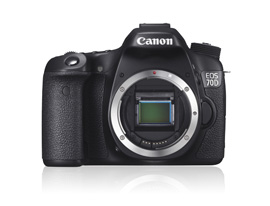
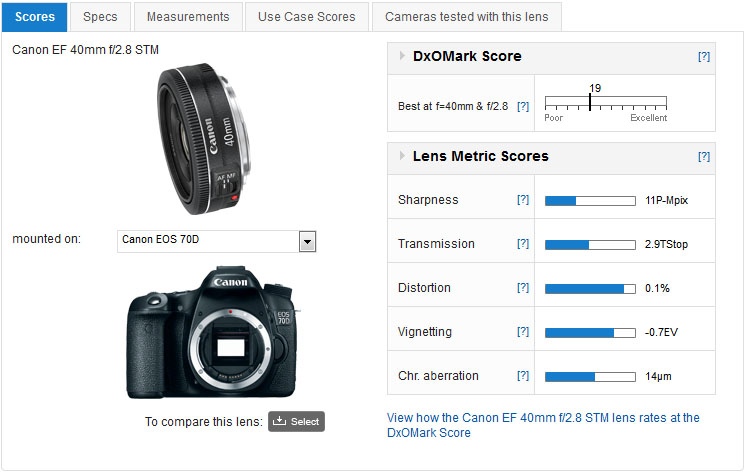
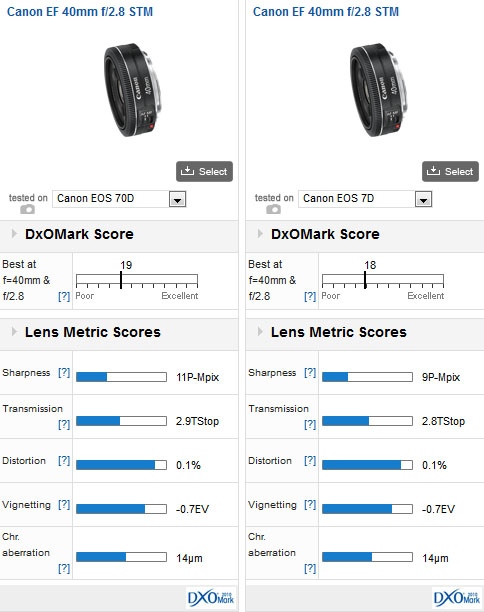
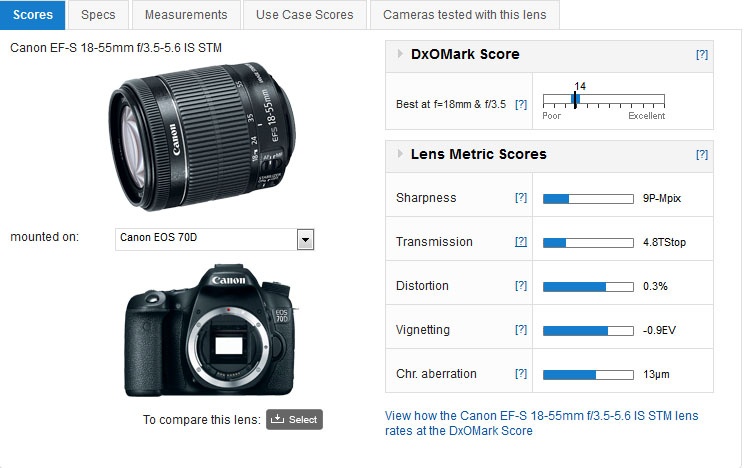
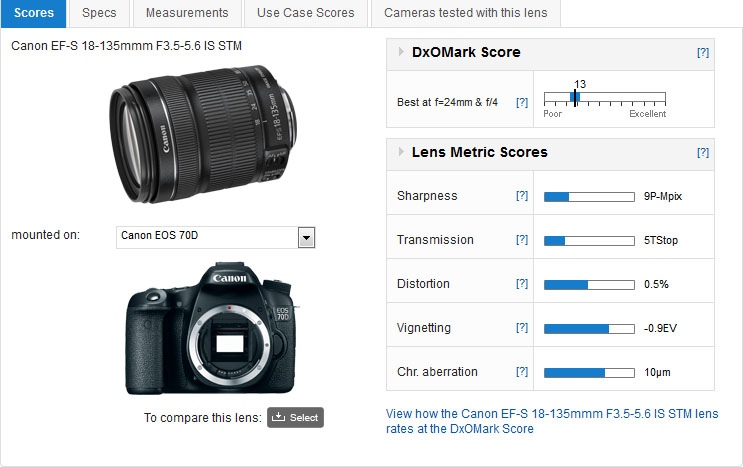
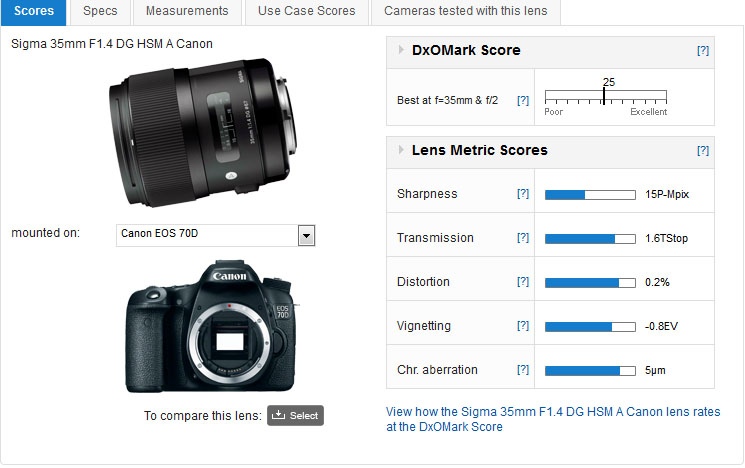
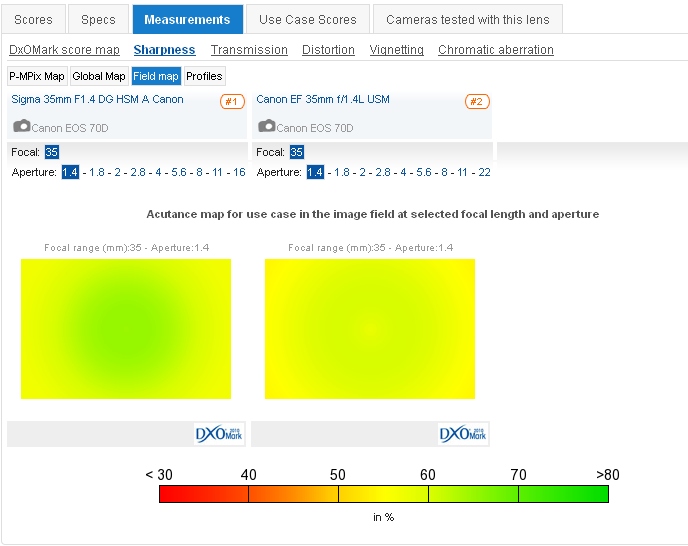
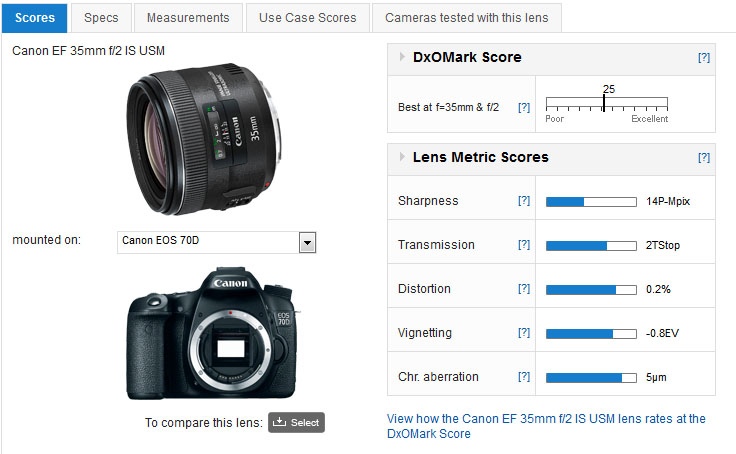
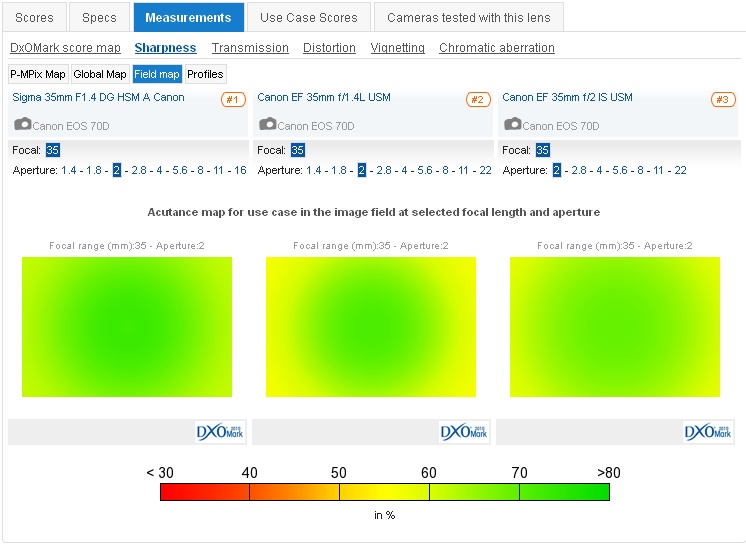
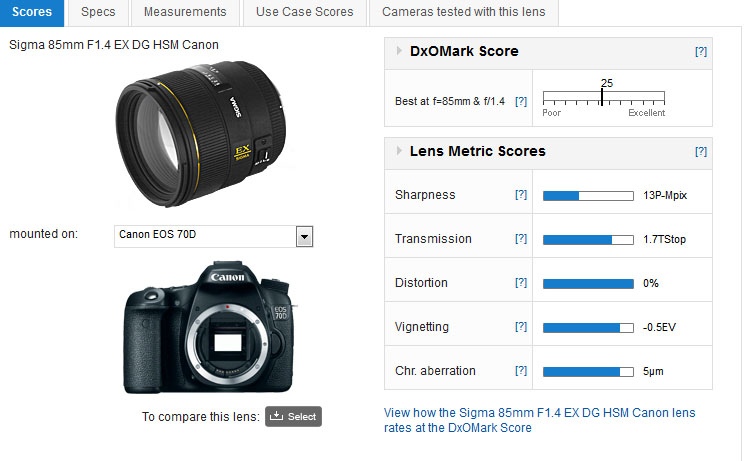
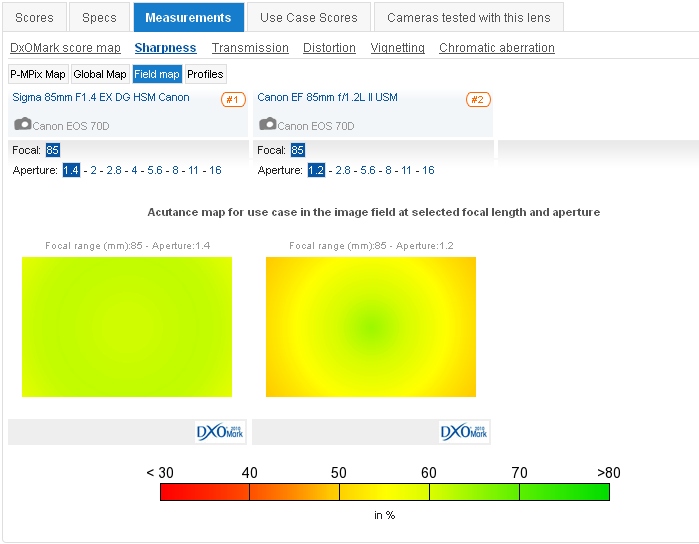
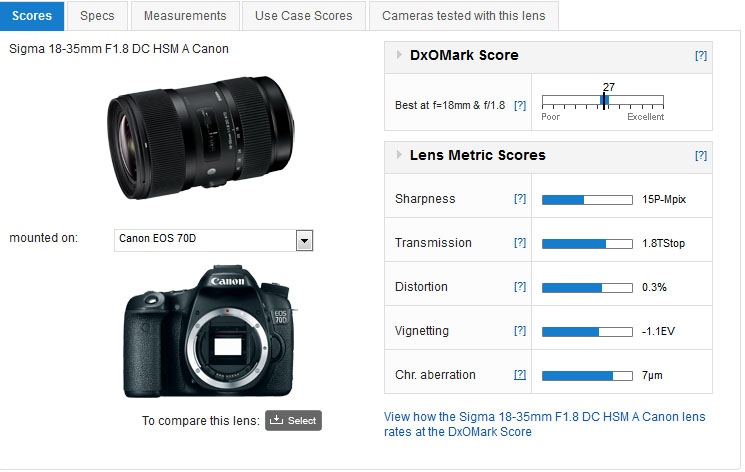
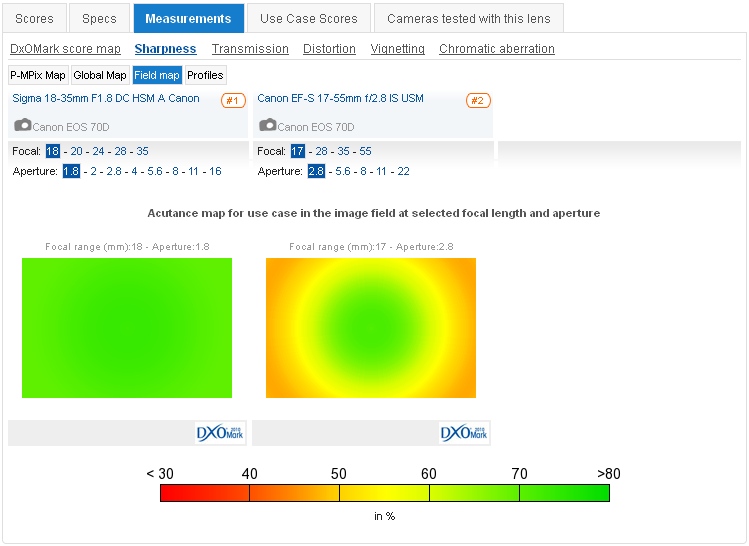

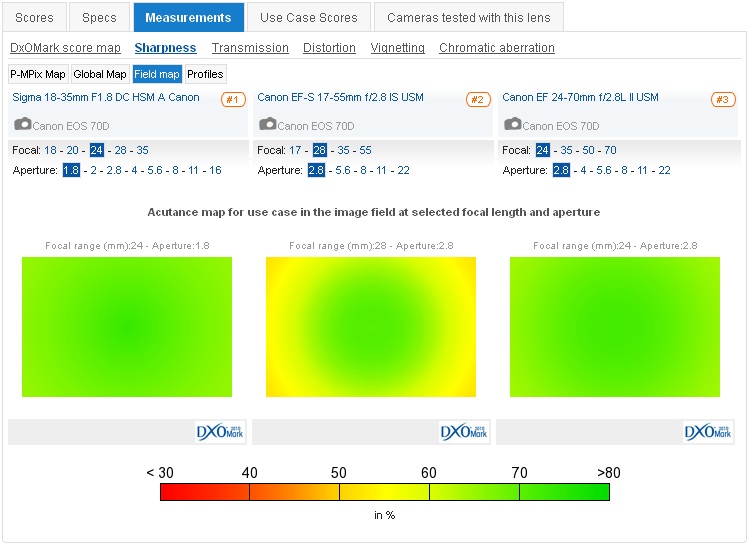
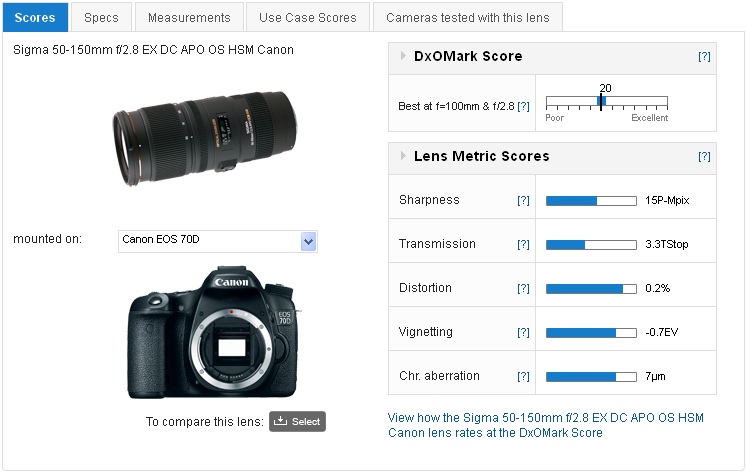
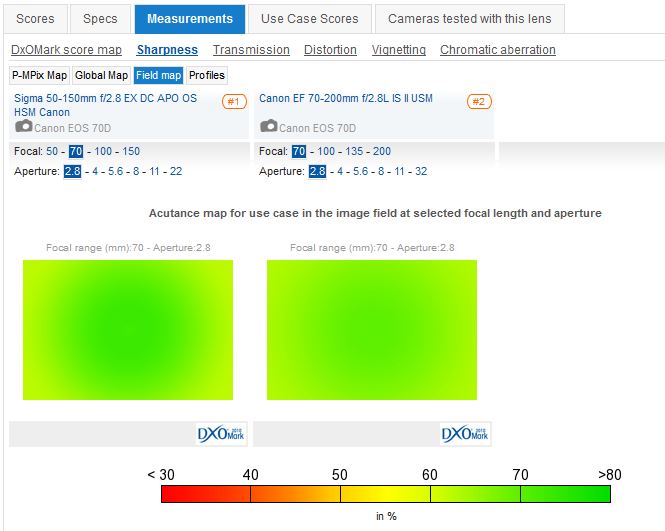
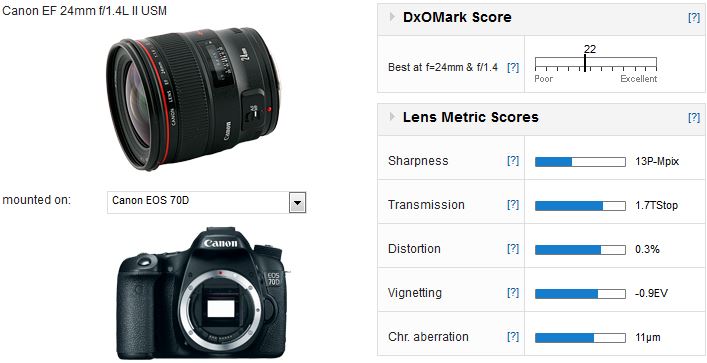
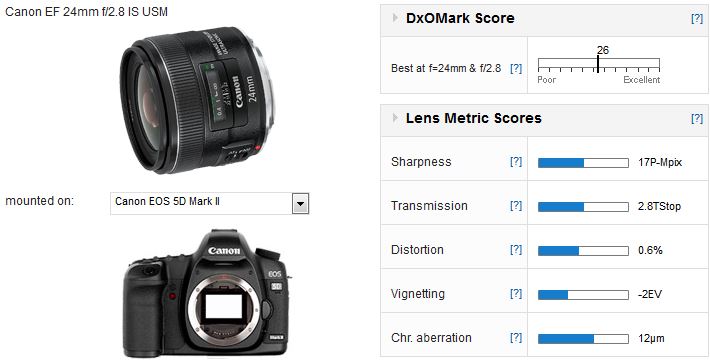
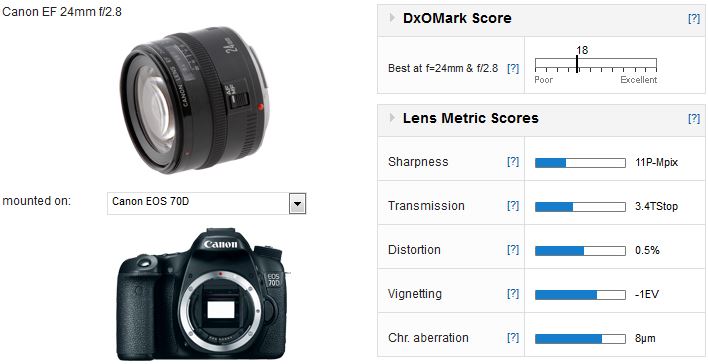
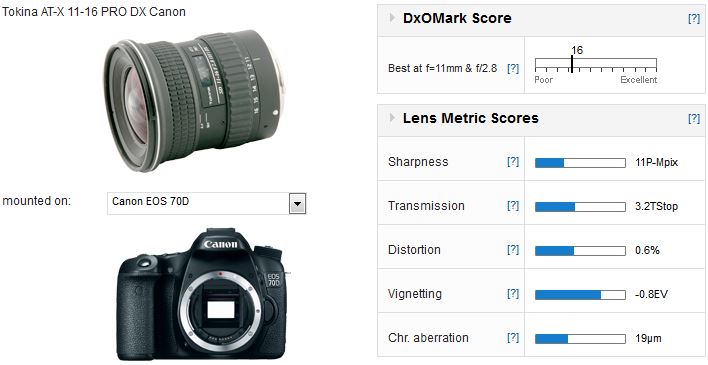
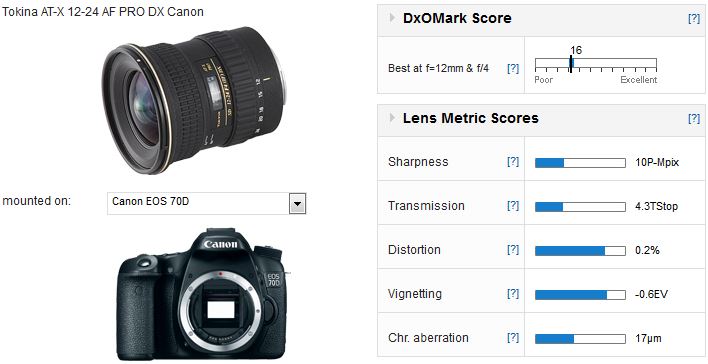
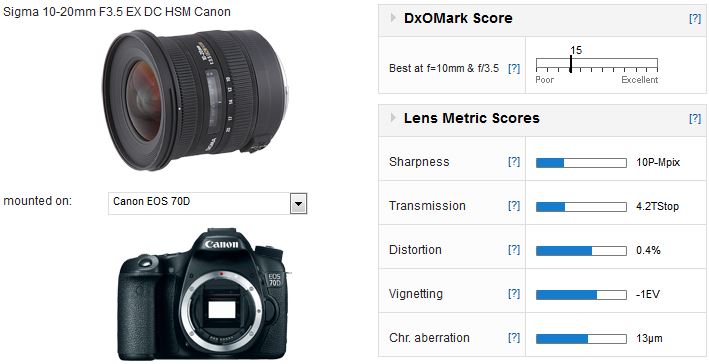
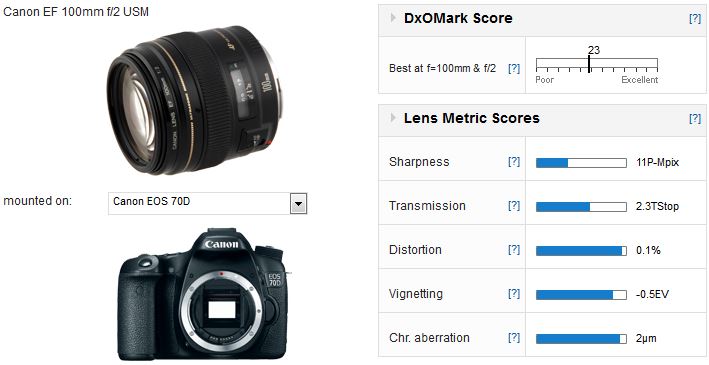
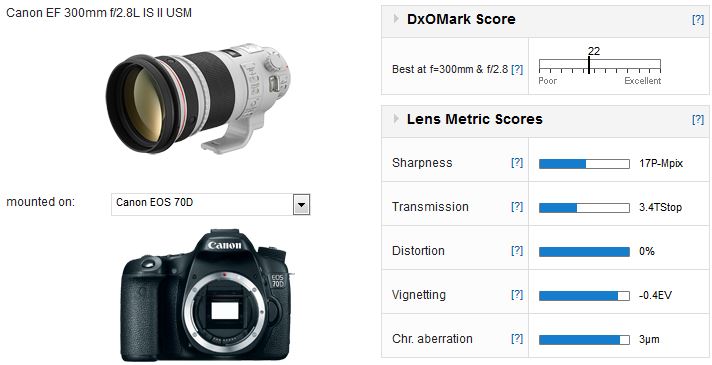
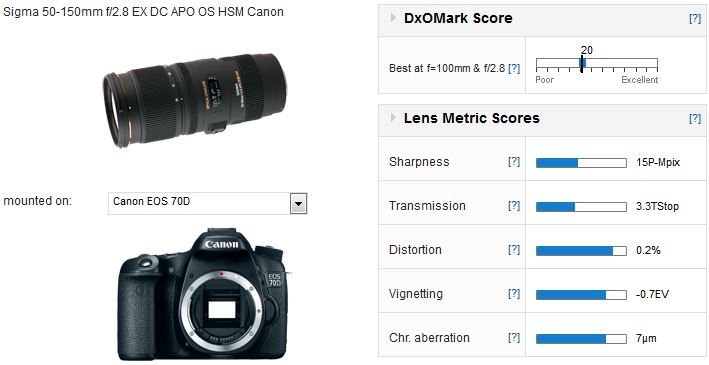

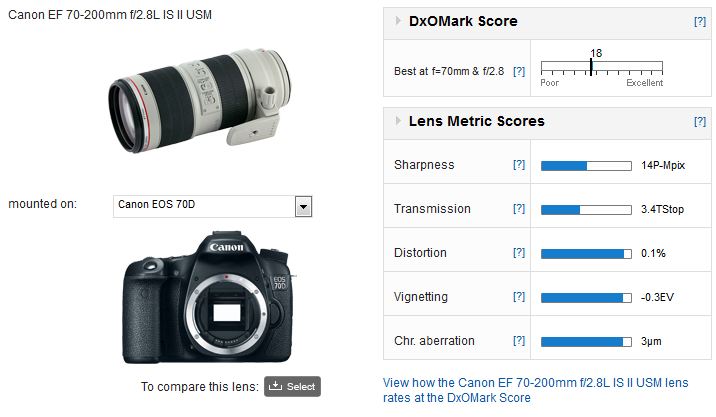
DXOMARK encourages its readers to share comments on the articles. To read or post comments, Disqus cookies are required. Change your Cookies Preferences and read more about our Comment Policy.